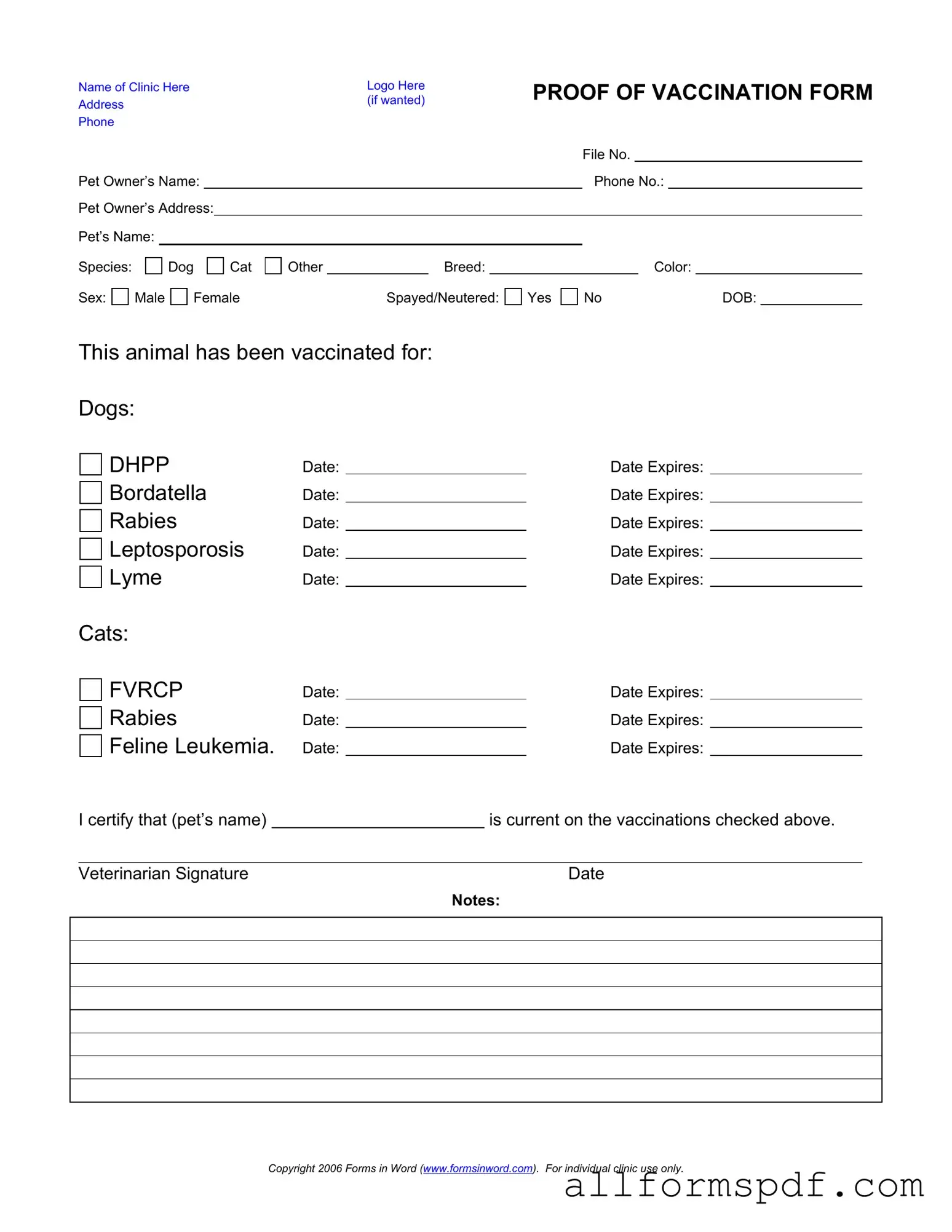Filling out the Proof of Vaccination Dog form may seem straightforward, but many pet owners encounter common pitfalls. One frequent mistake is neglecting to include the pet owner’s contact information. Without a phone number or address, it can be challenging for the clinic to reach you in case of questions or follow-ups regarding your pet's vaccinations.
Another common error is failing to specify the pet’s name clearly. If the name is illegible or incomplete, it can create confusion, especially if there are multiple pets with similar names. Ensuring that the name is accurate and easy to read is crucial for proper record-keeping.
Many people overlook the importance of selecting the correct species of their pet. While the form allows for dogs, cats, or other species, selecting the wrong option can lead to incorrect vaccinations being recorded. Always double-check that you’ve marked the right box.
Inaccuracies often arise in the section regarding the breed of the dog. Some owners may not know their dog’s exact breed or may use informal names. Providing the correct breed helps veterinarians understand any breed-specific health concerns that may arise.
Another mistake is not indicating whether the dog is spayed or neutered. This information is important for understanding your pet's health and behavioral needs. Failing to provide this detail can lead to misunderstandings in future care recommendations.
Completing the vaccination dates can be tricky. Many people forget to fill in the expiration dates for each vaccination. This information is vital, as it indicates when your pet will need a booster shot. Omitting these dates can lead to lapses in vaccination coverage.
Additionally, some owners may mistakenly assume that a single signature is sufficient for all vaccinations. Each vaccination requires a separate signature and date from the veterinarian. Skipping this step can render the form incomplete and invalid.
Another error involves the certification statement. Some pet owners fail to read or understand this section, which certifies that the information provided is accurate. Providing false information, even unintentionally, can have serious consequences for both the owner and the pet.
Finally, many people do not keep a copy of the completed form. Having a personal record is essential for future reference, especially if the pet needs to visit a new clinic or if there are any disputes regarding vaccination status. Always make a copy for your records before submitting the form.
